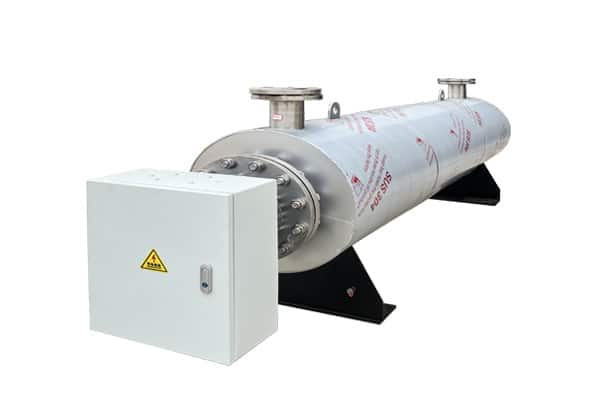I. Introduction
With the continuous growth in industrial automation, energy conservation, environmental protection, and the demand for efficient heat transfer, air heaters https://8ruiyan.com/en/all-air-heaters/are increasingly widely used across various industrial fields. Whether in drying systems, hot air circulation, combustion assistance, heating furnaces, or environmental temperature control scenarios, air heaters serve as the core “heat source.” They convert electrical energy, steam, thermal oil, or fuel into thermal energy to rapidly heat air, providing temperature support for entire process systems.
This article will comprehensively analyze the principles, structure, classification, performance parameters, and application characteristics of air heaters from a technical perspective, helping readers gain an in-depth understanding of this critical industrial equipment.

II. Working Principle of Air Heaters
The basic operating mechanism of an air heater is:
Utilizing internal heating elements (electric heating tubes, finned tubes, burners, etc.) to convert energy into thermal energy, and then heating the air to the set temperature through thermal convection or forced air delivery, thereby achieving temperature control of the system’s airflow.
The heater body is typically used in conjunction with fans, air ducts, and electrical control systems. During operation, air is blown by the fan into the heater body, flows around the heating elements to absorb heat, and is then delivered to the process endpoint.
III. Main Technical Classifications
Based on heating methods, structural forms, and usage environments, air heaters can be classified as follows:
- By Heat Source:
- Electric Air Heaters: Convert electrical energy to thermal energy via electric heating tubes; suitable for clean, high-precision control environments.
- Gas-fired Air Heaters: Use natural gas, liquefied petroleum gas (LPG), etc., to heat air through combustion; suitable for large-flow hot air heating systems.
- Steam/Thermal Oil Air Heaters: Indirect heating; mainly used in high-temperature, high-humidity, or explosion-proof environments.
- Heat-Pump Air Heaters: Use heat pump systems; energy-efficient and eco-friendly; suitable for medium-to-low-temperature applications.
- By Structural Form:
- Finned Tube Air Heaters: Suitable for low air velocity and large-area heat exchange.
- High-Temperature Cylindrical Air Heaters: Suitable for high-temperature, low-airflow applications (temperatures up to 850°C+).
- Shell-and-Tube Air Heaters: Used in high-pressure, closed-loop circulation systems.
- By Air Delivery Method:
- Natural Convection Type: No fan; relies on natural air movement.
- Forced Air Type: Uses a fan to drive airflow, improving heat transfer efficiency.
IV. Detailed Technical Structure
An air heater consists of several key components. Its design rationality directly affects heating efficiency and system stability:
- Heating Elements:
- Common types: U-shaped heating tubes, finned heating tubes, ceramic heating rods.
- Materials: Typically 304/316 stainless steel for corrosion resistance and high-temperature tolerance.
- Optional explosion-proof structures for flammable gas environments.
- Heat Exchange Chamber:
- Casing made of carbon steel or stainless steel, with an insulation layer.
- Internal air channels feature streamlined design to ensure uniform heat distribution.
- Maintenance ports are provided on the casing for easy servicing.
- Control System:
- Integrated thermocouples/RTDs, PID regulators, SSR modules, etc.
- Capable of constant temperature control, over-temperature alarms, timed operation, and interlock protection.
- PLC remote control systems are optional for intelligent management.
- Insulation and Sealing Structure:
- Insulation layer: Aluminum silicate wool, rock wool, aerogel, etc.
- Outer cladding: Aluminum or stainless steel plates to improve protection grade.
- Flange connections include high-temperature sealing gaskets to prevent leaks.
V. Key Technical Parameters
| Parameter | Range or Description |
|---|---|
| Heating Power | 1 kW – 2000 kW (customizable) |
| Operating Temperature | Ambient – 850°C (high-temp models up to 1000°C) |
| Airflow Range | 50 m³/h – 50,000 m³/h |
| Voltage Configuration | AC 220V/380V/660V/3-phase 5-wire system |
| Temperature Accuracy | ±1°C – ±5°C (supports PID regulation) |
| Material Options | Q235, 304, 316L, titanium alloy, explosion-proof coatings |
VI. Application Scenarios
Air heaters are widely used in the following industries and scenarios:
- Spraying/Drying Systems: Automotive paint lines, metal surface treatment.
- Plastic Processing/Extruder Hot Air Heating: Plastic film, pipe preheating.
- Pharmaceutical Industry: Clean air circulation, high-temperature sterilization systems.
- Chemical Sector: Reaction atmosphere heating, pipeline trace heating.
- Food Processing: Hot air drying, dehydration treatment.
- Energy & Power Industry: Air preheating, flue gas denitrification reheating systems.
VII. Technical Advantages & Development Trends
Technical Advantages:
- Rapid heating, high thermal efficiency.
- Precise temperature control.
- Compact structure, easy installation and maintenance.
- High safety factor with multiple protection mechanisms.
- Suitable for continuous operation, highly adaptable.
Development Trends:
- Progress toward higher temperatures and intelligent control.
- Modular design for easier system expansion and maintenance.
- Integration of remote monitoring and IoT technologies to enhance operational efficiency.
- Greater emphasis on energy efficiency, driving development of low-energy materials (e.g., graphene, ceramic heating elements).
VIII. Conclusion
As a vital component of industrial thermal systems, air heaters have evolved from traditional resistance heating to intelligent, modular, and integrated solutions. With the advancement of green manufacturing, air heaters will play an increasingly critical role in energy conservation, environmental protection, and safety. When selecting an air heater, enterprises should comprehensively consider technical parameters, application environments, and safety performance to achieve optimal system configuration.
For further consultation, please contact our technical team for expert advice.
Whatsapp:86-19106101570
wechat:86-19106101570
email:nieyili@cnryan.com
